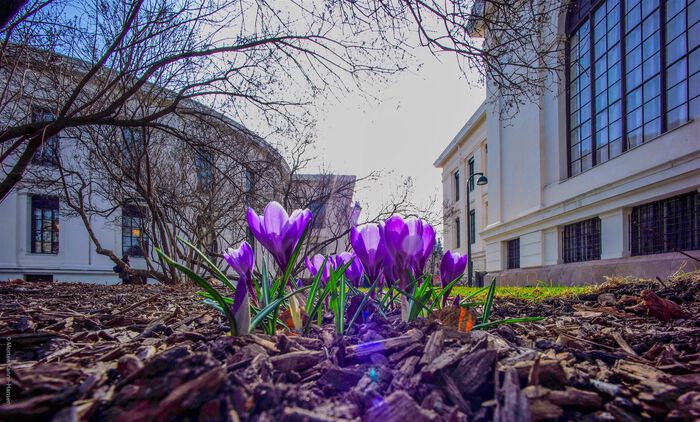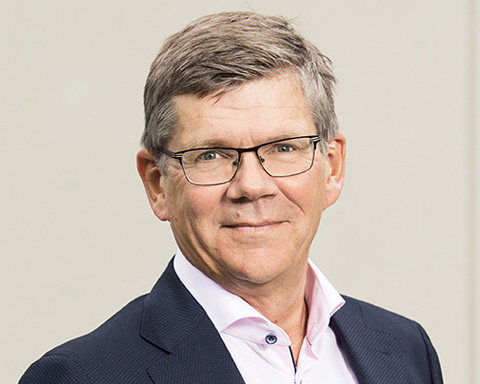Opprinnelig holdt som ?pningstale ved University of Oslo Arctic Day 2021
The University of Oslo has a proud history of researchers exploring the Arctic – Fridtjof Nansen being the most famous. His research was important for the young Norwegian nation, but he and his academic curiosity also sparked the development of modern dynamical oceanography.
And of course Vilhelm Bjerknes, whose theoretical work led directly to the development of weather prediction. One of our buildings is named after him.
Today we find Arctic research and ocean science within many disciplines and at 4 faculties and 2 museums at the University of Oslo.
National and international focus area
The ocean is definitely on the agenda:
We have entered the United Nation?s Decade of Ocean Science for Sustainable Development.
The International Ocean Panel is an important initiative launched by Norway to achieve sustainable ocean management worldwide, with Prime Minister St?re as Co-Chair.
Here in Norway, with the new government, the former position as Minister of Fisheries has become the Minister of Fisheries and Ocean Policy, highlighting the importance of this policy field.
The ocean has always been important to Norway. It has shaped our industries and economy, our foreign policy, culture and identity. Our sea area is six times larger than the mainland. More than 200,000 Norwegians work in the oil, seafood or maritime industries, and contribute to the creation of values of around 500 billion Norwegian crowns annually. In the most essential respects, the ocean provides goods and services that are fundamental to life on Earth.
A lot still unexplored
The ocean is rich and mysterious. There is still much we do not know about it, and some of the knowledge we do have, was uncovered not so long ago.
Like on that day in 1986 when something strange appeared in the laboratory of Sallie Chisholm and her colleagues at the Massachusetts Institute of Technology. They were looking for undiscovered marine organisms, and had decided to resort to a new technique: using lasers to count and sort cells. When they did, an unexpected and red, glowing signal appeared. At first, it was so faint that they thought it was just electronic noise.
Chisholm and her team had discovered a tiny bacterium. As small as it is, there are about 3 quadrilliards of it in the ocean (Note to nerds: a quadrilliard is a number with 27 zeros behind it).
This microscopic organism contributed to the emergence of life in the ocean, and to the process by which the amount of oxygen in the atmosphere began to rise a long time ago, resulting in life on land as well. Today, the bacterium produces about 20 percent of all the oxygen we breathe.
That?s 1 in 5 breaths!
Complex and vulnerable
The Arctic Ocean is a delicate mesh of intertwined organisms and biological processes. Take the marginal ice zone, which is the area where open sea meets the Arctic sea ice. For more than three million years, this so called food tray has been home to a unique diversity of life such as plankton, fish, polar bears, birds, seals and whales.
Being so complex, the Arctic Ocean is also vulnerable – which makes us vulnerable too.
We see it most acutely with climate change. The Arctic is warming much faster than the global average. Three times as fast, actually.
As a result, an increasing share of the Arctic is ice free throughout or during most of the year. This opens up for human activity such as fishery, transportation, tourism, and petroleum exploration – with all its pressures on nature and the environment.
The recent development with so many different industries competing to make use of the ocean – traditional ones and new ones such as ocean wind, ocean fish farming and seabed mining – create new challenges and require consolidated and knowledge-based ocean management.
Achieving this is no mean feat. The Arctic area is regulated through several treaties, conventions and agreements, but also the jurisdiction of eight different countries.
I would like to highlight the trust that characterises the Nordic countries. It is crucial for cooperating across sectors and borders, and vital for dealing with conflicting interests related to the ocean. This trust must be safeguarded, at a time when we see signs of a more polarised debate and politics.
The role of the University of Oslo
The balance between growth and conservation will not be less challenging in the years to come.
As a university with a wide range of disciplines, the University of Oslo has particularly good prerequisites and the capacity to address such interdisciplinary and highly complex issues.
We have cutting-edge expertise on climate change and its consequences for the resource situation, politics, security, legal issues, biodiversity, and people living in and off nature. There are 40 such indigenous groups in the Arctic.
By understanding what is happening and why it is happening, we will be more equipped to deal with the changes that are coming and to handle them in a sustainable way.





